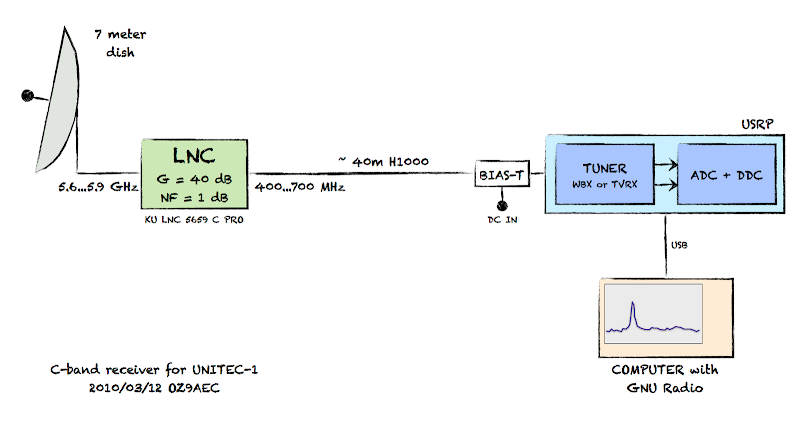If everything goes according to current plans, JAXA will launch their PLANET-C spacecraft towards Venus on May 18, 2010. To fill out the empty space and available payload mass on the H-IIA rocket, they will also bring four university built cubesats into orbit. One of these cubesats, UNITEC-1, is very special in that it will follow PLANET-C all the way to Venus, although without any propulsive capabilities to make trajectory corrections it might end up somewhere else – we’ll see about that. Another special thing about UNITEC-1 is that it will be using the 6 cm amateur radio band. Cubesats have a tendency to be stuck on VHF and UHF frequencies for understandable reasons, so a 5.8 GHz signal from deep space will be an interesting challenge!
Our Mission
The mission for us radio amateurs is much more than just trying to listen for UNITEC-1. As I see it, radio amateurs can:
- Receive telemetry from an interplanetary spacecraft. UNITEC-1 will transmit telemetry on 5.84 GHz using very simple ON/OFF keying at 1 bit per second. This is quite exciting – I believe it will be the first time that we can receive unencrypted telemetry from an interplanetary spacecraft.
- Support the UNITEC-1 operators by tracking their craft. By providing them with accurate measurements of antenna pointing and Doppler shift, the operators can estimate the actual trajectory of the craft (remember, UNITEC-1 does not have any coherent tracking transponder on-board). More tracking data from around the world will improve their statistics significantly.
There is a formal call for support on the UNITEC-1 website requesting the global amateur radio community to help with tracking. You can also read about the actual mission UNITEC-1 will carry out during its journey to Venus. Be sure to check out the PDF file that gives many details relevant to tracking.
System Overview
We plan on assembling a system consisting of:
- The 7 meter parabolic dish at OZ7SAT
- A wide band feed that should be good up to 10 GHz
- A Low noise down-converter (LNC)
- Universal Software Radio Peripheral (USRP) with an appropriate RF daughterboard (probably WBX trasceiver or TVRX receiver)
- GNU Radio-based software defined radio receiver
We are going to need a C-band downconverter. From Kuhne we have several choices. One kind uses 1.4…1.7 GHz as IF, the other kind uses 400…700 MHz as IF. Since we already have about 40 meters of H1000-class cable between the antenna and the control room, we chose the UHF version to reduce the cable losses.
The LNC has been ordered and it should arrive next week. We have everything else on stock but will need to write some software. There is plenty of time though until 17 May. In any case, stay tuned for updates during the coming weeks.
Related articles:
